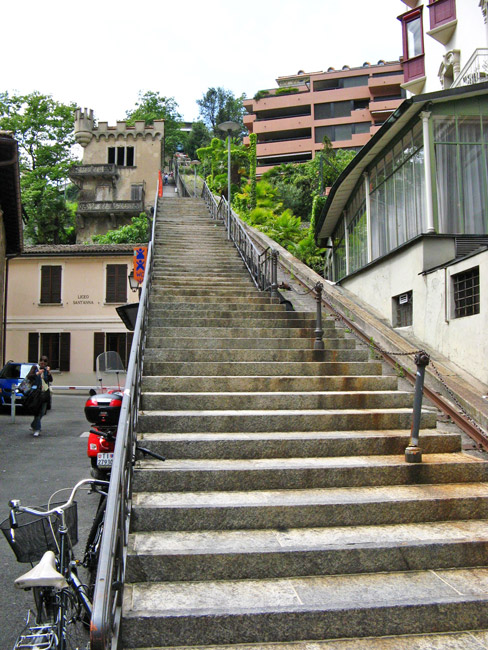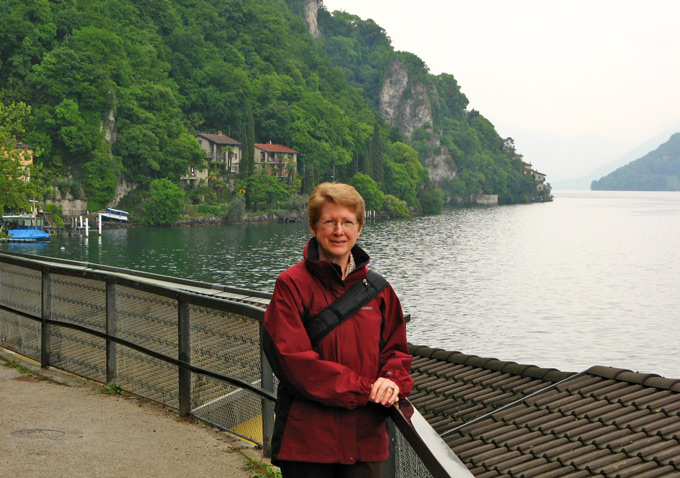
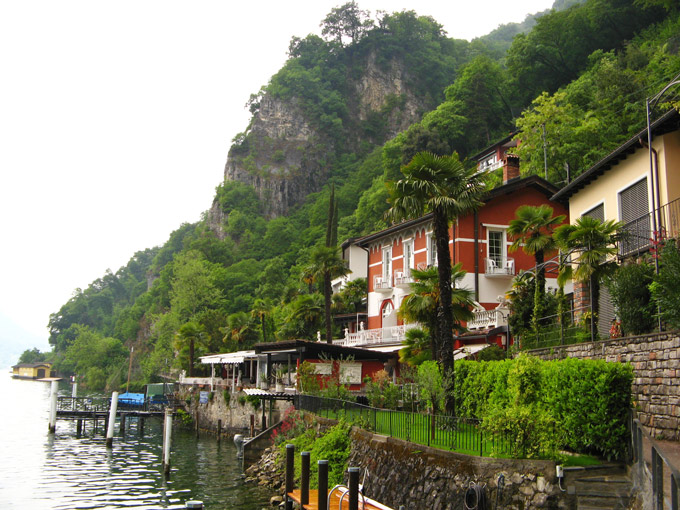
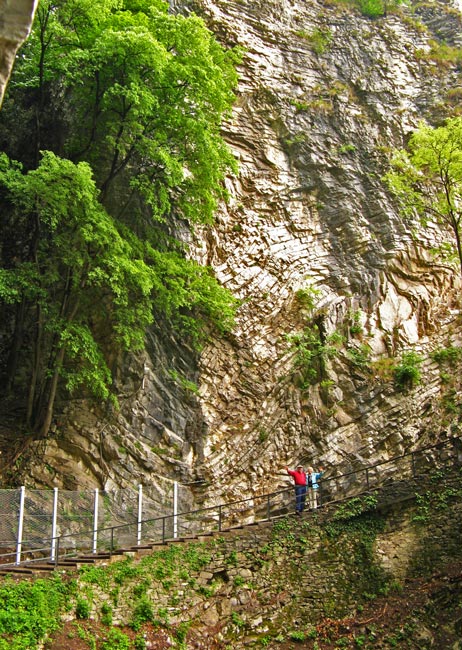
Gandria is a picturesque little cluster of houses on Lake Lugano with several restaurants from which to choose. Given the town’s fishing heritage, it was no surprise that our patio luncheon overlooked a bevy of boats:
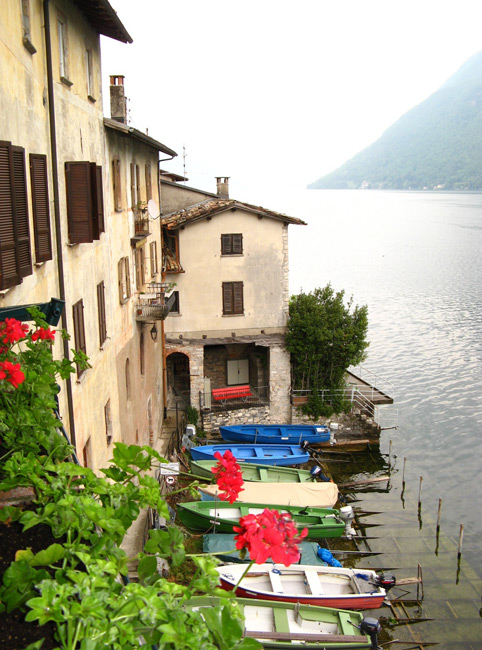
After dining, we were pleased to see our ship arrive, its name promising more delights ahead:
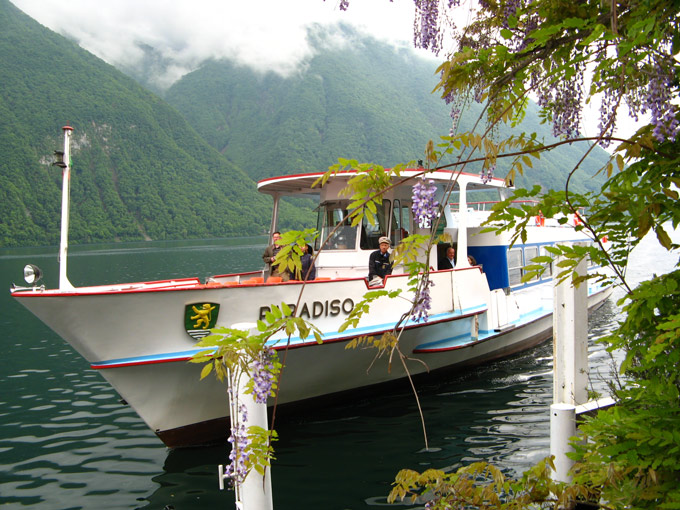
With our departure from Gandria, we finally gained a view of its steep lakeside perch:
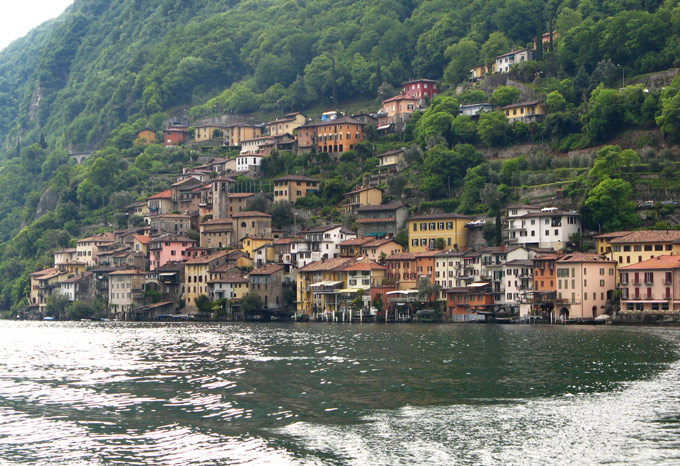
Our group went its separate ways upon reaching Lugano. Patty and I explored the City Park where, by accident, we gazed upon the “Pearly Gates”. Did you know they were in Lugano?
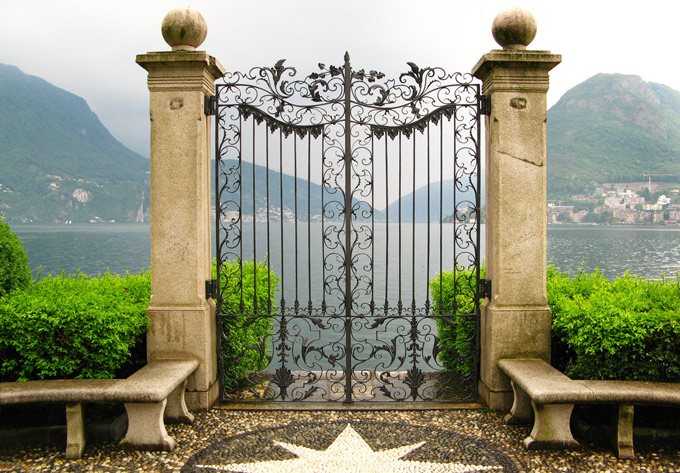
As we continued our way back to the city center, our view across the water was toward San Salvatore, one of two “sugarloaf mountains” close to Lugano:
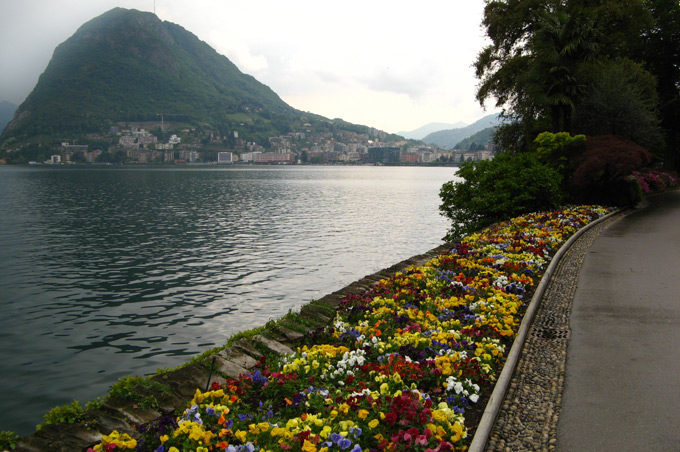
From the city, we had two choices for returning to the railway station: struggle up this long, steep incline or take the funicular, hidden away behind the awning on the left. Thanks to our Swiss Rail Passes which cover such things, it was a no-brainer.
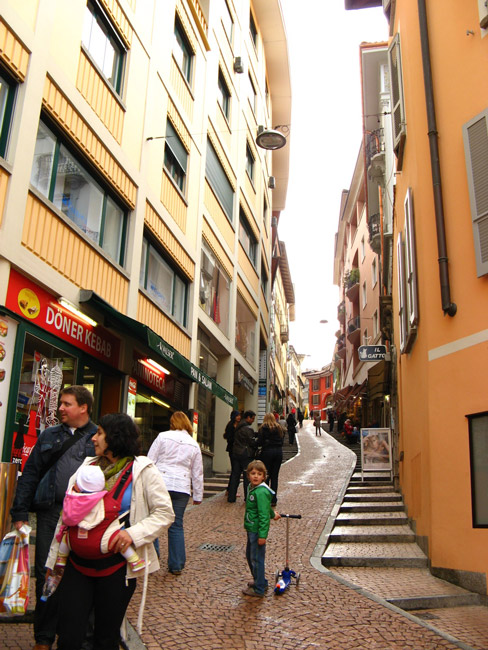
Days later, we traveled on our own to the Lugano area and stopped first at the Swissminiatur Park in Melide:
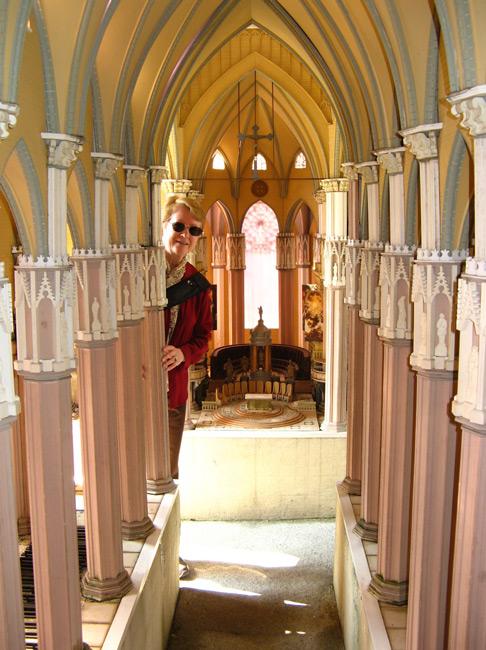
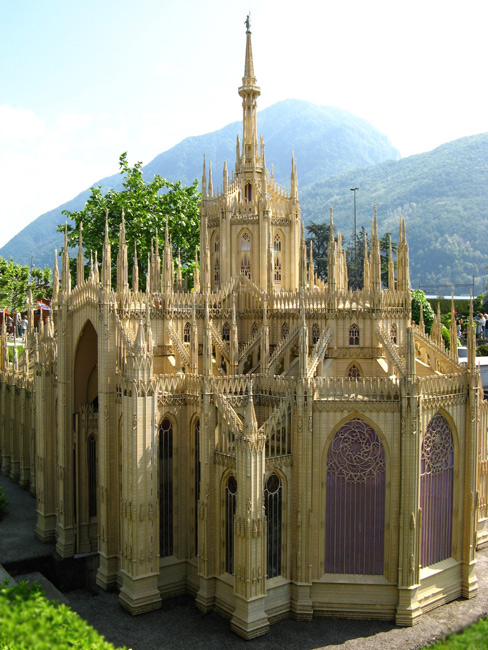
A Swiss citizen, we concluded, would have gotten more from these models than we did. Nevertheless, we gained a new perspective on Swiss life:
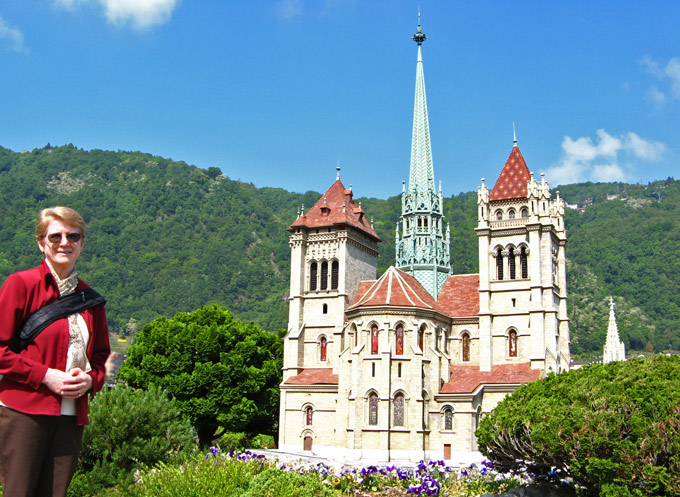
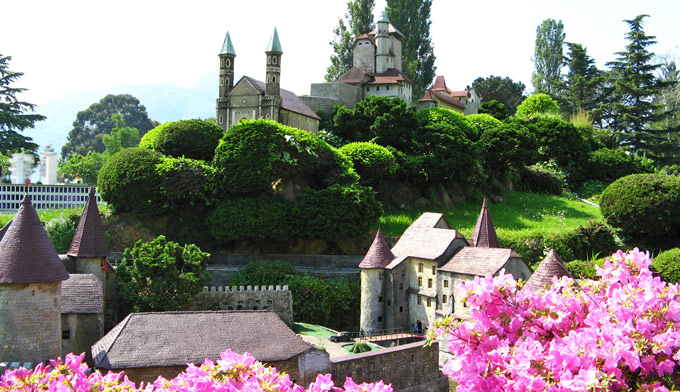
This model depicts the “blessing of the motorcyclists”, an annual event near the Simplon Pass at the opening of motorcycling season:
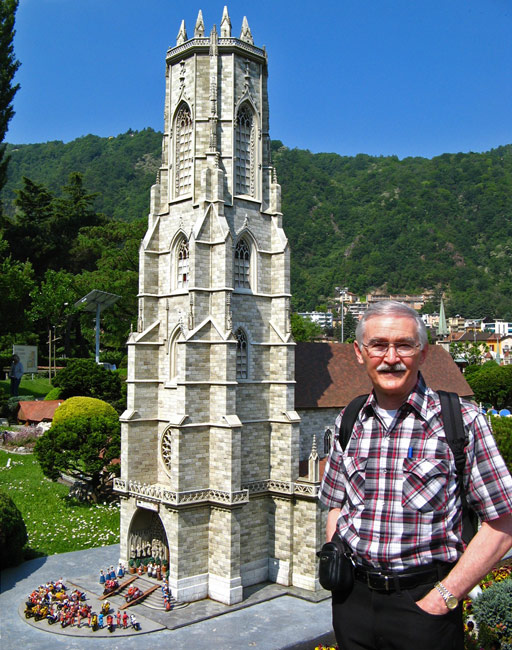
However, we understand this season’s blessing (April 28) was cancelled by the bishop due to excessive beer consumption --- by the motorcyclists, of course.
Wrapping up our Lugano experience, we took the pretty lakeside walk from Paradiso to the city center. (Paradiso is on the opposite side of Lugano from Gandria.) At the start of that walk, we spied this fascinating structure in the hills above us:
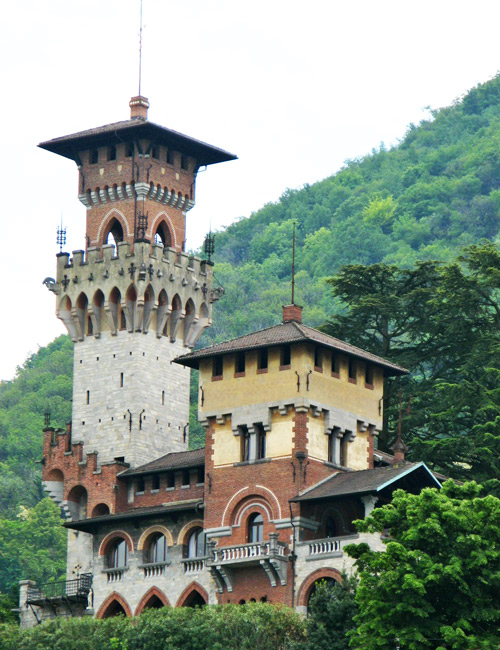
In contrast, there is no doubt that all the buildings across the water in this photo belong to Lugano:
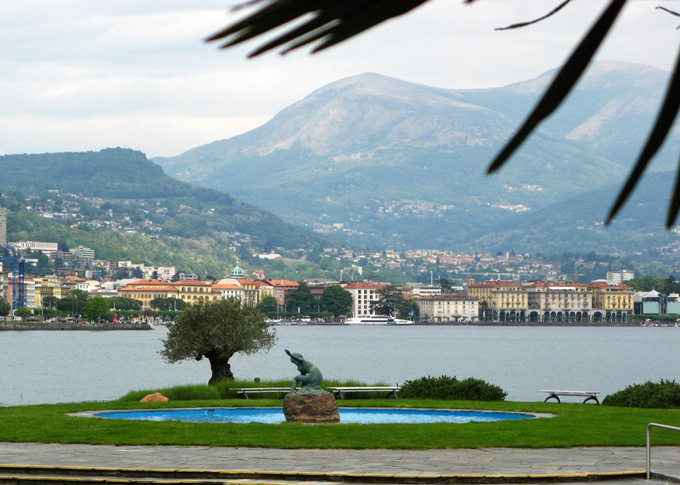
From the outside, the Church of Saint Mary of the Angels (Chiesa Santa Maria Degli Angioli) in Lugano is a fairly plain and unimpressive church (left photo below). Inside, though, is a real surprise (right photo below), a striking representation of the Crucifixion of Christ by Bernardino Luini, a pupil of Leonardo:
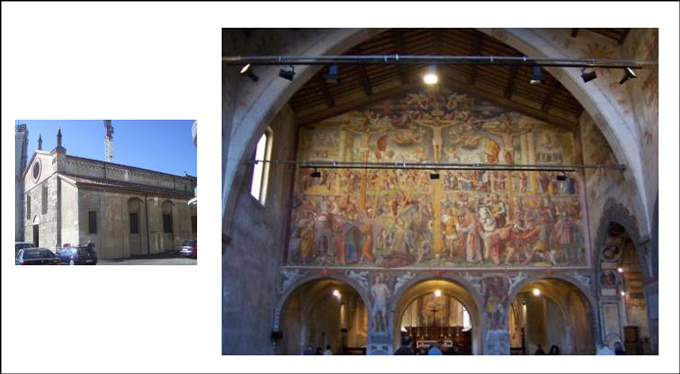
Once the abbey of a Franciscan monastery, the church was begun in 1499 and consecrated in 1515. On the wall that separates the nave from the altar, Luini started painting his grand illustration of the Crucifixion in 1529, completing it in 10 years. Three centuries later, it disappeared behind wood paneling! It wasn’t until the 1920’s that a restoration project uncovered this extraordinary fresco:
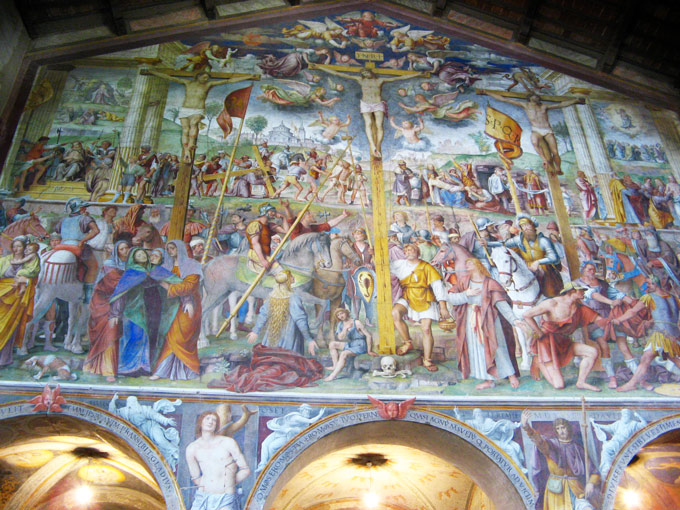
The closer you look, the more scenes of Christ’s Passion are revealed, along with others of Him being taken down from the cross and His resurrection. The fresco includes a lively crowd of 153 characters, including soldiers on horseback and others gambling for the robes of Christ, which creates a sharp contrast with the melancholy female figures.
Luini added the martyrdom of Saint Sebastian, graphically pierced by arrows, and even painted himself into the scene. His face can be found on the man riding a horse, above the figure of a golden-haired Saint John with his hand to his heart.
In 1848, the monastery had been disbanded during Switzerland’s civil war and turned into a hotel which shared a common wall with the church. Over time, it fell into disuse and disrepair. Needless to say, the rediscovery of this Renaissance treasure has given the church new life. There are other artistic riches, too, throughout the church, including “The Last Supper” by Luini on a side wall.
Next to the church is another reminder that Lugano is anything but flat:
